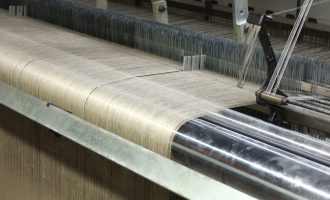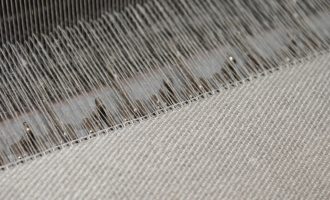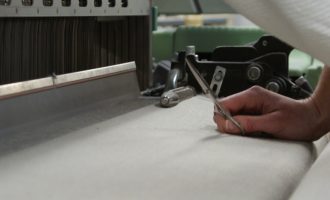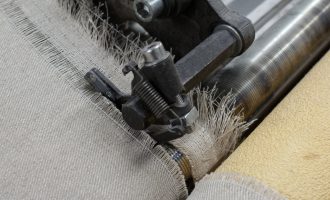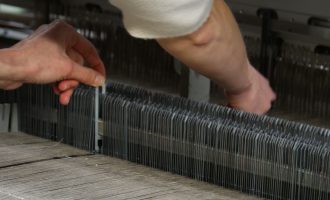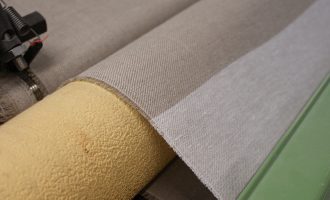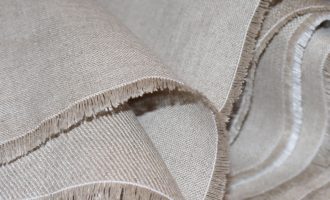linnen kavels: industrial weaving at enschede textielstad
The first meters of Linnen Kavels cloth woven using 100% linen yarn from The Linen Project rolled off the loom at weaving mill Enschede Textielstad this year; entering the next phase of exploring the local linen value chain. Having trialled and evaluated potential variations, Linnen Kavels offer a plain, twill and satin weave, in a selection of densities.
Weaving, like cultivation, is a process affected by diverse factors and requires specialised expertise. Setting up the loom for weaving is itself a time-consuming activity; it can take more than a week to prepare the yarn and the warp beam, depending on the available labour and the volume of production. Maintaining uniform tension is essential for the weaving process, and requires precision and skill. Each fibre type has distinct properties that require certain ways of handling.
The long, fine flax fibres that contribute to the attractive material qualities of linen also bring specific challenges during processing. While distinctly strong, resilient and breathable as a fibre and textile, possible breakage during linen weaving remains a calculated risk as the warp threads are placed under considerable tension on the mechanised loom. Eventual warp breakages require repair by hand before the weaving process can continue. Flax has less elasticity than other natural fibres such as wool and cotton, and humidity, speed, and friction between warp and weft are factors that impact the outcome.
Sampling is therefore a crucial moment of getting to know the specific yarn, which can even vary per batch, and to establish the conditions that are necessary and advantageous for the desired result. Annemieke and her assistant personally monitored and adjusted the loom throughout the sample weaving and the further production of the Linnen Kavel textiles being woven using The Linen Project yarn.
-
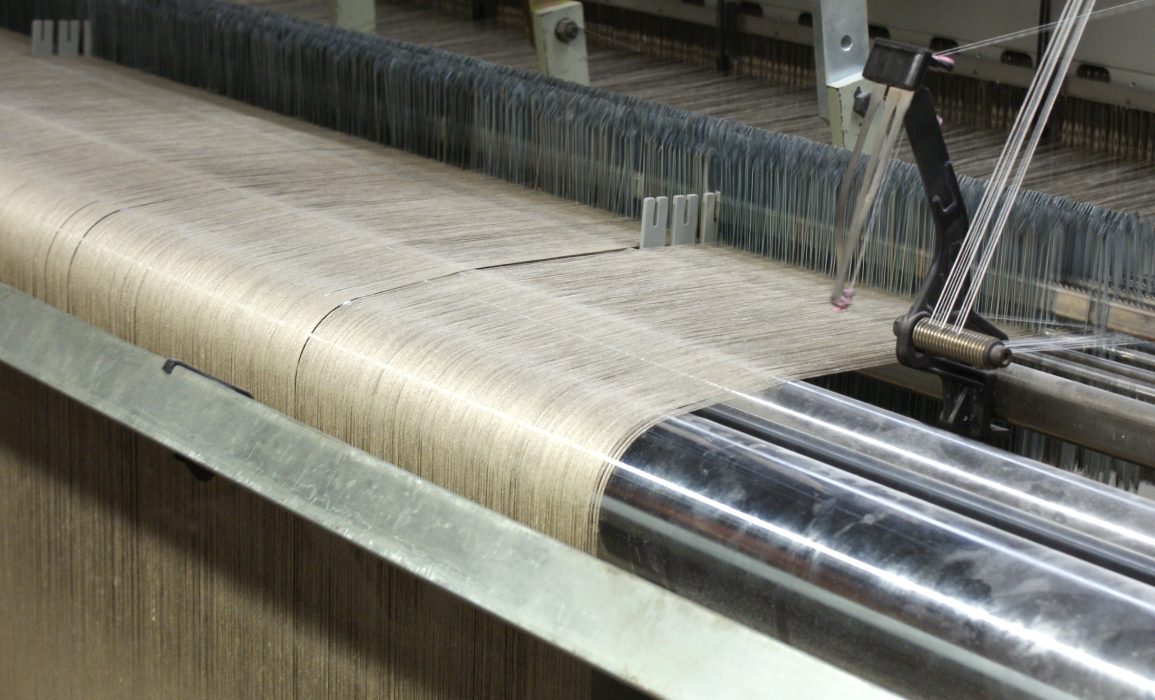
linen warp threads on the rapier loom during sampling
-
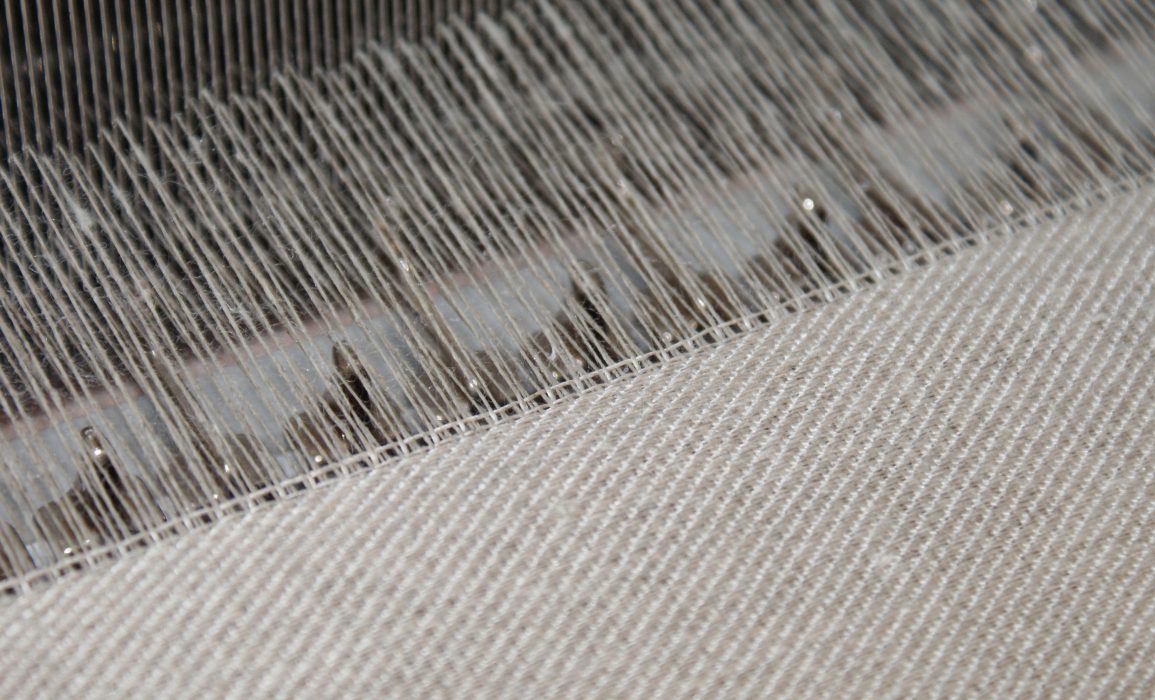
close-up of the warp (vertical) and weft (horizontal) threads in a twill sample
-
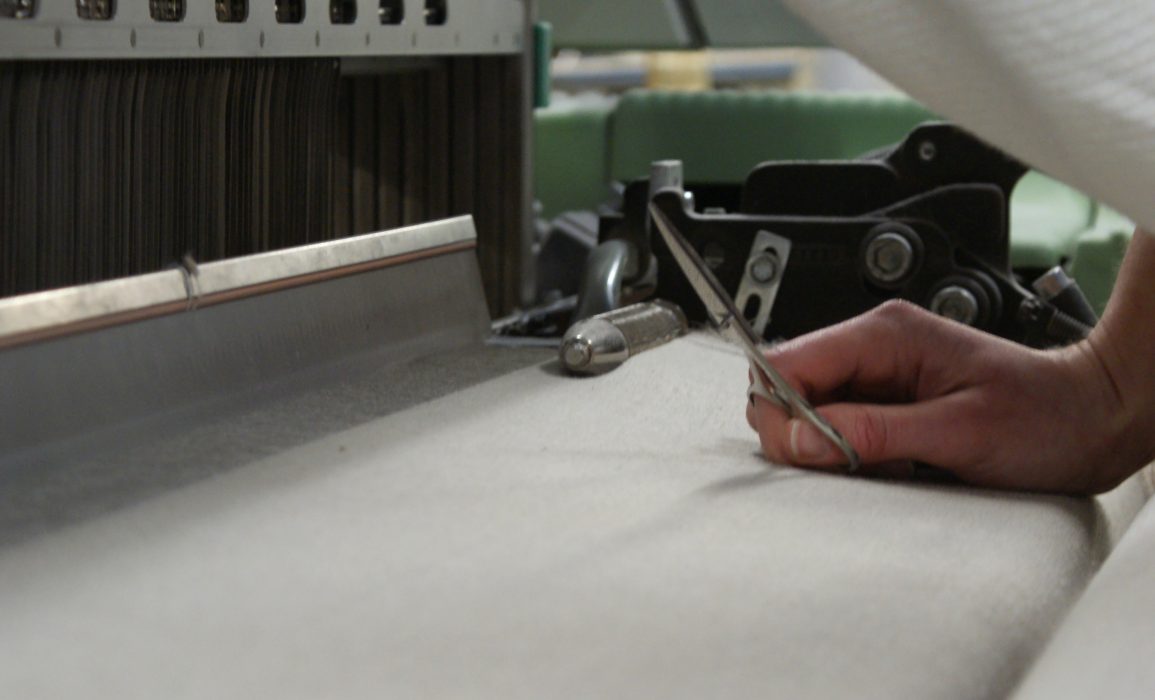
checking for loose threads
-
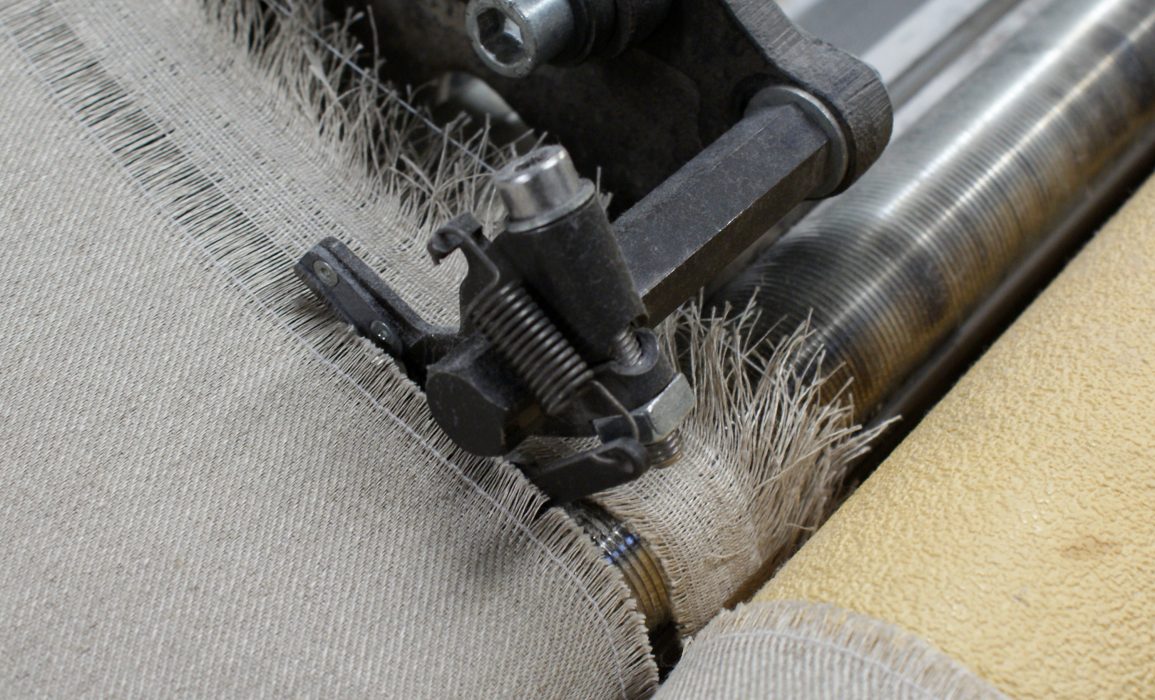
the selvedges are trimmed on the loom directly after weaving
-
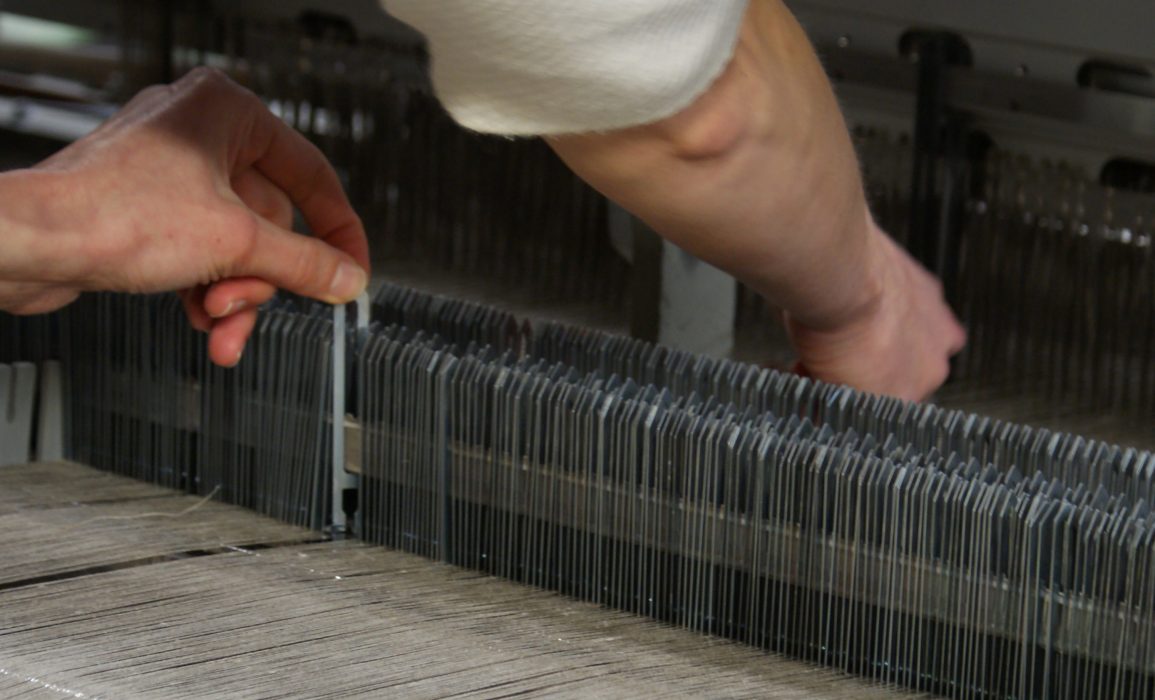
tending to the warp thread
-
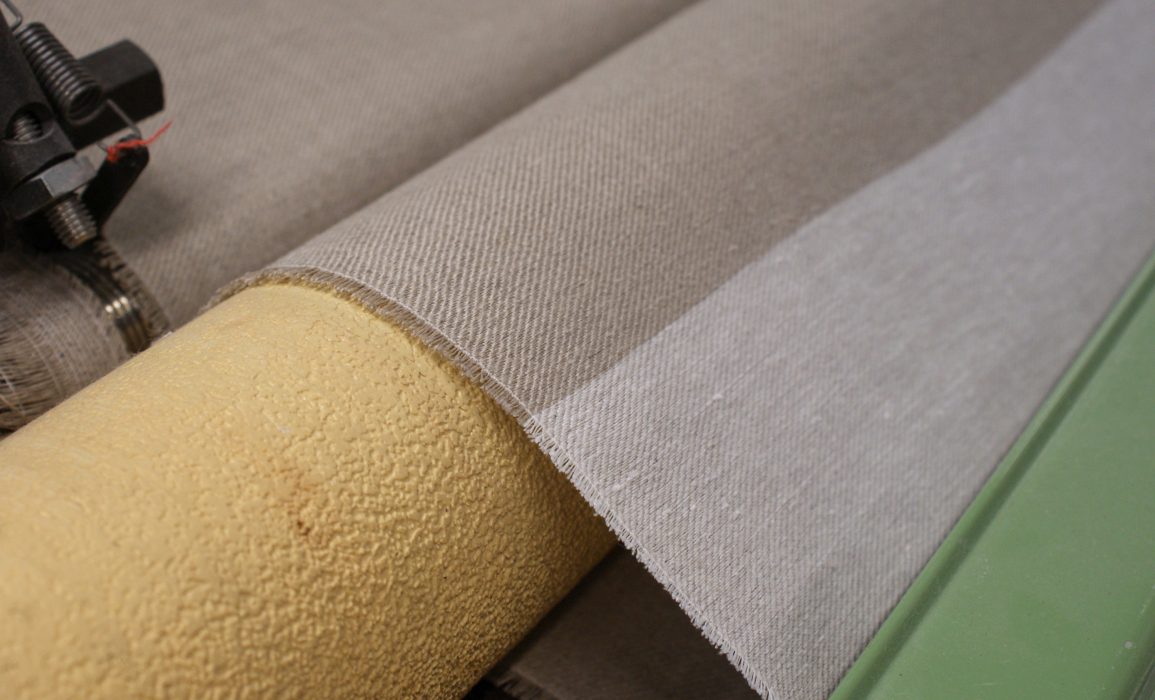
the first linen samples rolling out
-
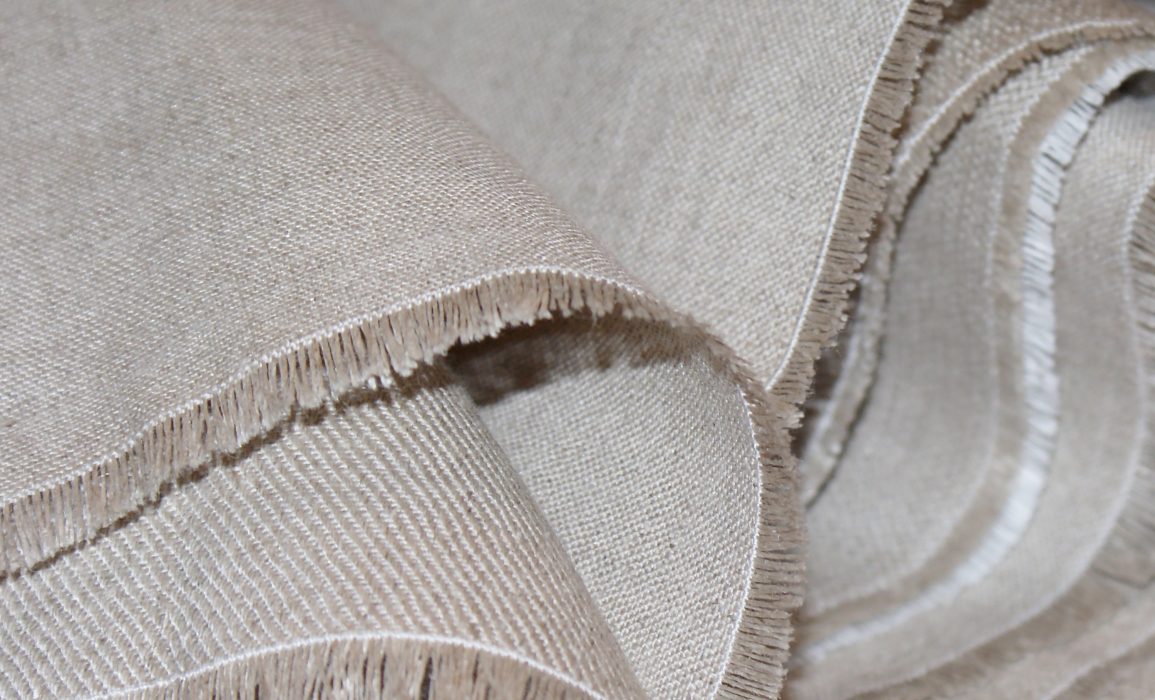
a selection of the different types of weaves
